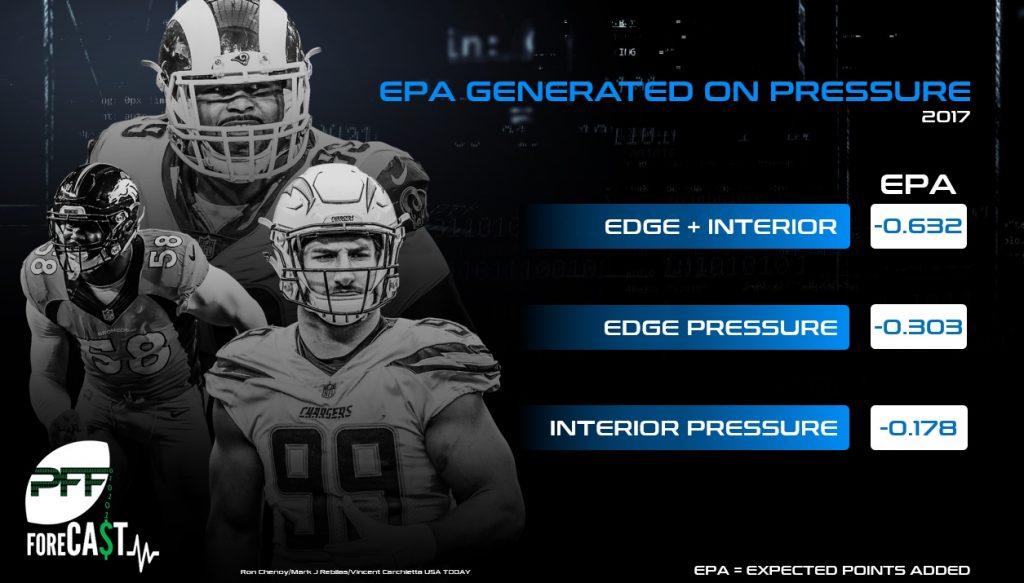The All-Under-25 Team: QB Jared Goff
- By Prime Time
- RAMS / NFL TALK
- 10 Replies
http://www.nfl.com/photoessays/0ap3...f-alvin-kamara-joey-bosa-make-allunder25-team
Jared Goff, Alvin Kamara, Joey Bosa make All-Under-25 Team
Elliot Harrison
OFFENSE
Quarterback: Jared Goff, Los Angeles Rams
What more can you say about Goff's ascendant 2017 campaign? Throwing for 28 touchdowns against just seven interceptions was the most impressive statistical component. And yes, in case you were wondering, Carson Wentz is indeed already 25.
Running back: Ezekiel Elliott, Dallas Cowboys
Despite the controversy, Elliott is elite when he's on the field. Through two seasons, he is averaging 104.6 rush yards per game. His yards per carry went down last year, but he still sports a 4.6 career average -- and he's scored 25 touchdowns in 25 games.
Running back: Alvin Kamara, New Orleans Saints
The top two-way threat in football, at least until David Johnson is back in action. (Johnson is 26.) A second-team All-Pro in Year 1, Kamara had the unique distinction of bringing a Darren Sproles-esque dimension with 826 yards in the passing game, while also adding 728 yards (at 6.1 a pop) on the ground.
Wide receiver: Stefon Diggs, Minnesota Vikings
Despite being the WR2 in Minnesota by season's end, Diggs is still top shelf. He posted 849 receiving yards and eight TDs despite missing two games with a groin injury. Oh, and he contributed the biggest playoff reception in years. His catch radius is fantastic.
Wide receiver: Tyreek Hill, Kansas City Chiefs
After being Mr. Versatile for the Chiefs in Year 1, Hill was able to concentrate on being a wideout in his sophomore campaign. Not playing on the return team allowed him to take fewer hits and take the next step as a WR1. The result: 75 catches for 1,183 yards and seven touchdowns.
Tight end: Evan Engram, New York Giants
Amidst a brutal season in New York, Engram developed into a bright spot as a rookie. While more people focused on O.J. Howard in the 2017 NFL Draft (the tight end taken at No. 19 overall), Engram (No. 23) quietly tallied 64 catches for 722 yards and six TDs.
Offensive tackle: Jack Conklin, Tennessee Titans
After a brilliant rookie campaign that ended in a first-time All-Pro nod, Conklin took a small step backward in 2017 -- but not by much. Conklin brings prototypical dimensions at 6-foot-6 and 308 pounds, yet retains the agility to seal the edge or protect Marcus Mariota's front side.
Offensive tackle: Ryan Ramczyk, New Orleans Saints
The Saints knocked it out of the park in their 2017 NFL Draft. Ramczyk is the second of four New Orleans players from that class on this team. His rapid progression allowed for Asshole Face to re-emphasize the run game after leaning on Drew Brees' arm for years.
Offensive guard: Dan Feeney, Los Angeles Chargers
The Chargers took it on the chin when their top two picks, wide receiver Mike Williams and guard Forrest Lamp, got hurt in the months following the draft. Little did anyone know that Feeney, a third-rounder (No. 71 overall), would step in and become a solid front-line player. Much upside.
Offensive guard: Ethan Pocic, Seattle Seahawks
Took special notice of Pocic when he made Gil Brandt's 2017 All-Rookie Team. He progressed as the season moved along in a need area for Seattle, despite starting at left guard, right guard and backing up at center(!). He allowed just two sacks all year.
Center: Pat Elflein, Minnesota Vikings
Yet another rookie makes the All-Under-25 Team, and for good reason. Elflein helped the Vikings improve in the one area they had to get better: up front. The unit allowed 11 fewer sacks than in 2016, and went from 32nd to seventh in rushing.
DEFENSE
Defensive end: Joey Bosa, Los Angeles Chargers
Bosa, the 2016 Defensive Rookie of the Year, is already a force after just two seasons in the league. Despite not playing a snap until Week 5 of his rookie campaign, the former Ohio State star has posted 23 sacks through 28 games. He and Melvin Ingram form a prolific pass-rushing duo thanks, in large part, to Bosa's incredible motor.
Defensive end: Myles Garrett, Cleveland Browns
Who knows how good Garrett's rookie season could've been if he hadn't gotten hurt. He racked up seven sacks and was able to pressure passers consistently despite missing five games. Sky's the limit on this specimen.
Defensive tackle: DeForest Buckner, San Francisco 49ers
Buckner is part of a young 49ers nucleus that will make waves in the NFC West as early as 2018. Buckner has more than held his own, with 61 tackles last season as an interior lineman. The sack numbers should grow.
Defensive tackle: Chris Jones, Kansas City Chiefs
Seemingly every pro football magazine and website thinks Jones will be an impact player. Despite the Chiefs' uninspired defensive showing in 2017 (ranked 28th overall), Jones compiled 6.5 sacks and a pick. He should play more downs in his third NFL campaign.
Linebacker: Deion Jones, Atlanta Falcons
What a season this dude had in Year 2. SEE: 138 tackles, three picks -- including one that sealed the win against the Saints in Week 14 -- and 1,142 plays, according to Pro Football Focus. Oh, and he is only 23 years old.
Linebacker: T.J. Watt, Pittsburgh Steelers
Watt was a fine starter from Day 1. While he has much potential to become a standout pass rusher, Watt enjoyed a solid overall rookie campaign with 54 tackles, seven sacks, a pick and seven passes defensed.
Linebacker: Myles Jack, Jacksonville Jaguars
Questions about Jack's longevity abated last year, considering he toiled on a whopping 1,223 plays, per Pro Football Focus. Jack is excellent in pass defense, a must for this era's linebackers. I gave strong consideration to Reuben Foster for this third 'backer slot, but he logged fewer than half the snaps of Jack last season (553, according to PFF). Not to mention, he's had some off-field issues. All that said, when Foster's on the field, he's dynamic. Tough omission.
Cornerback: Jalen Ramsey, Jacksonville Jaguars
Ramsey's another of the Jaguars' premier players on the defensive side of the ball -- and the second on this list. There are those who think Ramsey is the most talented defensive back in the league. He can match up with anybody.
Cornerback: Marshon Lattimore, New Orleans Saints
Lattimore received many accolades last year, including the 2017 Defensive Rookie of the Year, and gets yet another here. He narrowly edges out Bills cornerback Tre'Davious White. The performances of Lattimore and Kamara allowed Asshole Face to change the way the Saints viewed things philosophically. Instead of partaking in weekly track meets, New Orleans was able to employ the simple formula of running the football and playing much stronger defense.
Safety: Landon Collins, New York Giants
Collins is already one of the top safeties in the game at 24 years old. His 2016 campaign was worthy of strong DPOY consideration. Besides ranking with Harrison Smith and Earl Thomas, he has averaged a remarkable 114 tackles per year.
Safety: Marcus Williams, New Orleans Saints
New Orleans destroyed the competition in the 2017 NFL Draft. Williams is the fourth Saints player to make this list, after producing four interceptions and an outstanding season in coverage. Good tackler, too.
SPECIAL TEAMS
Kicker: Harrison Butker, Kansas City Chiefs
Butker was outstanding in 2017 -- frankly, one of the top kickers in the NFL. He made 38 of his 42 field-goal attempts, and every extra point (28). All this after getting released by the team that drafted him (Carolina) and pressed into service for the Chiefs in Week 4 on "Monday Night Football."
Punter: Rigoberto Sanchez, Indianapolis Colts
Stepping in for a living legend in Indy like Pat McAfee couldn't have been easy for Sanchez, but the first-year punter out of Hawaii was in the top 10 of net average in the NFL. Not bad for an undrafted rookie.
Returner: Tarik Cohen, Chicago Bears
Cohen contributed in every which way for the Bears in 2017, bringing an explosive element to Chicago's run game, pass game and return game. He finished in the top 10 in punt-return and kick-return average.
Jared Goff, Alvin Kamara, Joey Bosa make All-Under-25 Team
Elliot Harrison
OFFENSE
Quarterback: Jared Goff, Los Angeles Rams
What more can you say about Goff's ascendant 2017 campaign? Throwing for 28 touchdowns against just seven interceptions was the most impressive statistical component. And yes, in case you were wondering, Carson Wentz is indeed already 25.
Running back: Ezekiel Elliott, Dallas Cowboys
Despite the controversy, Elliott is elite when he's on the field. Through two seasons, he is averaging 104.6 rush yards per game. His yards per carry went down last year, but he still sports a 4.6 career average -- and he's scored 25 touchdowns in 25 games.
Running back: Alvin Kamara, New Orleans Saints
The top two-way threat in football, at least until David Johnson is back in action. (Johnson is 26.) A second-team All-Pro in Year 1, Kamara had the unique distinction of bringing a Darren Sproles-esque dimension with 826 yards in the passing game, while also adding 728 yards (at 6.1 a pop) on the ground.
Wide receiver: Stefon Diggs, Minnesota Vikings
Despite being the WR2 in Minnesota by season's end, Diggs is still top shelf. He posted 849 receiving yards and eight TDs despite missing two games with a groin injury. Oh, and he contributed the biggest playoff reception in years. His catch radius is fantastic.
Wide receiver: Tyreek Hill, Kansas City Chiefs
After being Mr. Versatile for the Chiefs in Year 1, Hill was able to concentrate on being a wideout in his sophomore campaign. Not playing on the return team allowed him to take fewer hits and take the next step as a WR1. The result: 75 catches for 1,183 yards and seven touchdowns.
Tight end: Evan Engram, New York Giants
Amidst a brutal season in New York, Engram developed into a bright spot as a rookie. While more people focused on O.J. Howard in the 2017 NFL Draft (the tight end taken at No. 19 overall), Engram (No. 23) quietly tallied 64 catches for 722 yards and six TDs.
Offensive tackle: Jack Conklin, Tennessee Titans
After a brilliant rookie campaign that ended in a first-time All-Pro nod, Conklin took a small step backward in 2017 -- but not by much. Conklin brings prototypical dimensions at 6-foot-6 and 308 pounds, yet retains the agility to seal the edge or protect Marcus Mariota's front side.
Offensive tackle: Ryan Ramczyk, New Orleans Saints
The Saints knocked it out of the park in their 2017 NFL Draft. Ramczyk is the second of four New Orleans players from that class on this team. His rapid progression allowed for Asshole Face to re-emphasize the run game after leaning on Drew Brees' arm for years.
Offensive guard: Dan Feeney, Los Angeles Chargers
The Chargers took it on the chin when their top two picks, wide receiver Mike Williams and guard Forrest Lamp, got hurt in the months following the draft. Little did anyone know that Feeney, a third-rounder (No. 71 overall), would step in and become a solid front-line player. Much upside.
Offensive guard: Ethan Pocic, Seattle Seahawks
Took special notice of Pocic when he made Gil Brandt's 2017 All-Rookie Team. He progressed as the season moved along in a need area for Seattle, despite starting at left guard, right guard and backing up at center(!). He allowed just two sacks all year.
Center: Pat Elflein, Minnesota Vikings
Yet another rookie makes the All-Under-25 Team, and for good reason. Elflein helped the Vikings improve in the one area they had to get better: up front. The unit allowed 11 fewer sacks than in 2016, and went from 32nd to seventh in rushing.
DEFENSE
Defensive end: Joey Bosa, Los Angeles Chargers
Bosa, the 2016 Defensive Rookie of the Year, is already a force after just two seasons in the league. Despite not playing a snap until Week 5 of his rookie campaign, the former Ohio State star has posted 23 sacks through 28 games. He and Melvin Ingram form a prolific pass-rushing duo thanks, in large part, to Bosa's incredible motor.
Defensive end: Myles Garrett, Cleveland Browns
Who knows how good Garrett's rookie season could've been if he hadn't gotten hurt. He racked up seven sacks and was able to pressure passers consistently despite missing five games. Sky's the limit on this specimen.
Defensive tackle: DeForest Buckner, San Francisco 49ers
Buckner is part of a young 49ers nucleus that will make waves in the NFC West as early as 2018. Buckner has more than held his own, with 61 tackles last season as an interior lineman. The sack numbers should grow.
Defensive tackle: Chris Jones, Kansas City Chiefs
Seemingly every pro football magazine and website thinks Jones will be an impact player. Despite the Chiefs' uninspired defensive showing in 2017 (ranked 28th overall), Jones compiled 6.5 sacks and a pick. He should play more downs in his third NFL campaign.
Linebacker: Deion Jones, Atlanta Falcons
What a season this dude had in Year 2. SEE: 138 tackles, three picks -- including one that sealed the win against the Saints in Week 14 -- and 1,142 plays, according to Pro Football Focus. Oh, and he is only 23 years old.
Linebacker: T.J. Watt, Pittsburgh Steelers
Watt was a fine starter from Day 1. While he has much potential to become a standout pass rusher, Watt enjoyed a solid overall rookie campaign with 54 tackles, seven sacks, a pick and seven passes defensed.
Linebacker: Myles Jack, Jacksonville Jaguars
Questions about Jack's longevity abated last year, considering he toiled on a whopping 1,223 plays, per Pro Football Focus. Jack is excellent in pass defense, a must for this era's linebackers. I gave strong consideration to Reuben Foster for this third 'backer slot, but he logged fewer than half the snaps of Jack last season (553, according to PFF). Not to mention, he's had some off-field issues. All that said, when Foster's on the field, he's dynamic. Tough omission.
Cornerback: Jalen Ramsey, Jacksonville Jaguars
Ramsey's another of the Jaguars' premier players on the defensive side of the ball -- and the second on this list. There are those who think Ramsey is the most talented defensive back in the league. He can match up with anybody.
Cornerback: Marshon Lattimore, New Orleans Saints
Lattimore received many accolades last year, including the 2017 Defensive Rookie of the Year, and gets yet another here. He narrowly edges out Bills cornerback Tre'Davious White. The performances of Lattimore and Kamara allowed Asshole Face to change the way the Saints viewed things philosophically. Instead of partaking in weekly track meets, New Orleans was able to employ the simple formula of running the football and playing much stronger defense.
Safety: Landon Collins, New York Giants
Collins is already one of the top safeties in the game at 24 years old. His 2016 campaign was worthy of strong DPOY consideration. Besides ranking with Harrison Smith and Earl Thomas, he has averaged a remarkable 114 tackles per year.
Safety: Marcus Williams, New Orleans Saints
New Orleans destroyed the competition in the 2017 NFL Draft. Williams is the fourth Saints player to make this list, after producing four interceptions and an outstanding season in coverage. Good tackler, too.
SPECIAL TEAMS
Kicker: Harrison Butker, Kansas City Chiefs
Butker was outstanding in 2017 -- frankly, one of the top kickers in the NFL. He made 38 of his 42 field-goal attempts, and every extra point (28). All this after getting released by the team that drafted him (Carolina) and pressed into service for the Chiefs in Week 4 on "Monday Night Football."
Punter: Rigoberto Sanchez, Indianapolis Colts
Stepping in for a living legend in Indy like Pat McAfee couldn't have been easy for Sanchez, but the first-year punter out of Hawaii was in the top 10 of net average in the NFL. Not bad for an undrafted rookie.
Returner: Tarik Cohen, Chicago Bears
Cohen contributed in every which way for the Bears in 2017, bringing an explosive element to Chicago's run game, pass game and return game. He finished in the top 10 in punt-return and kick-return average.


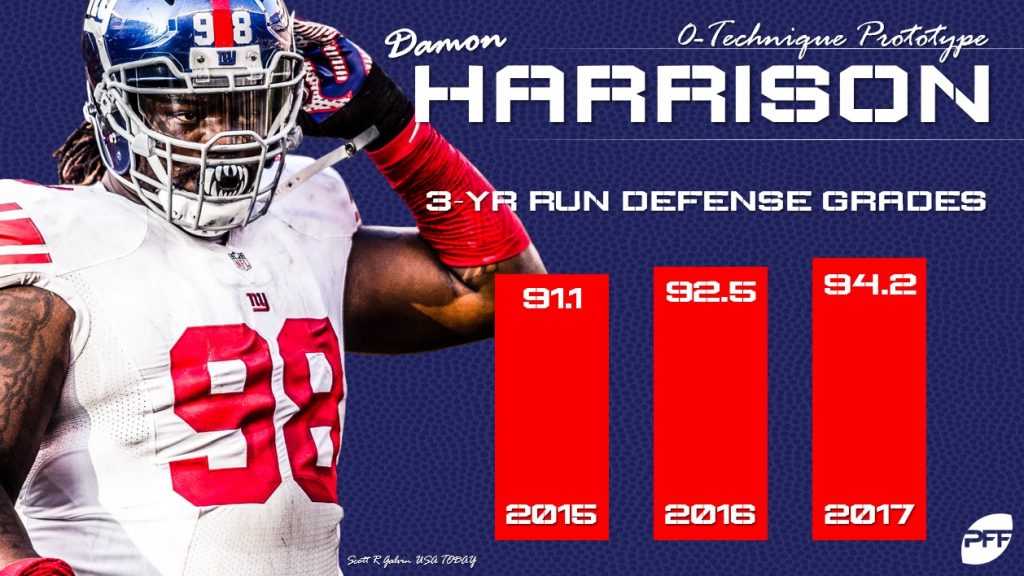

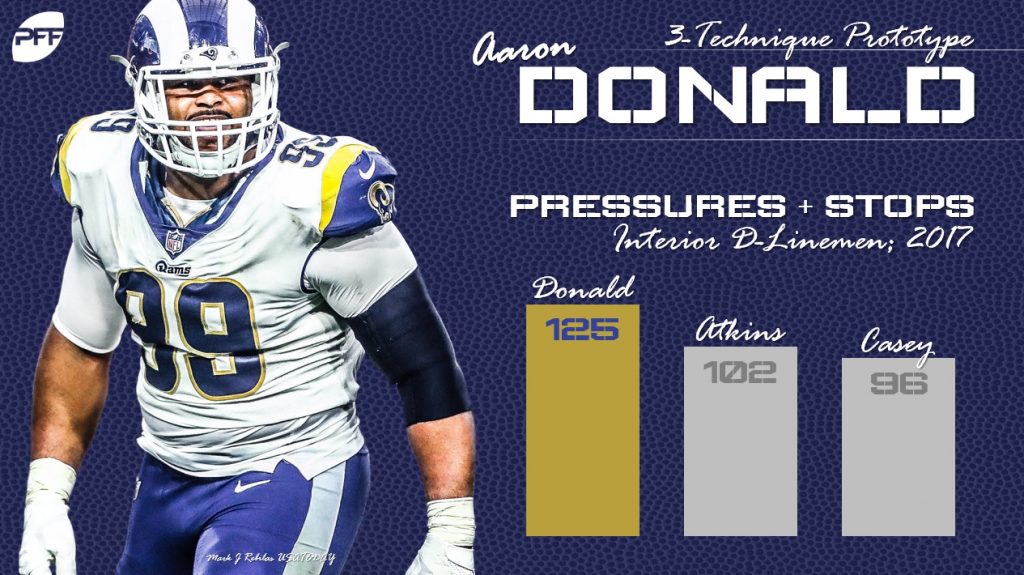
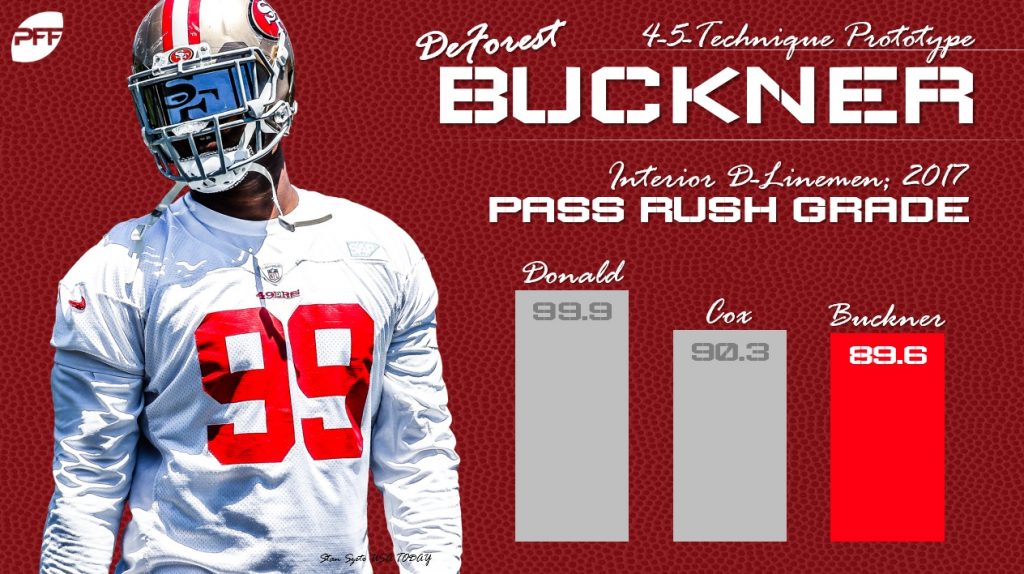
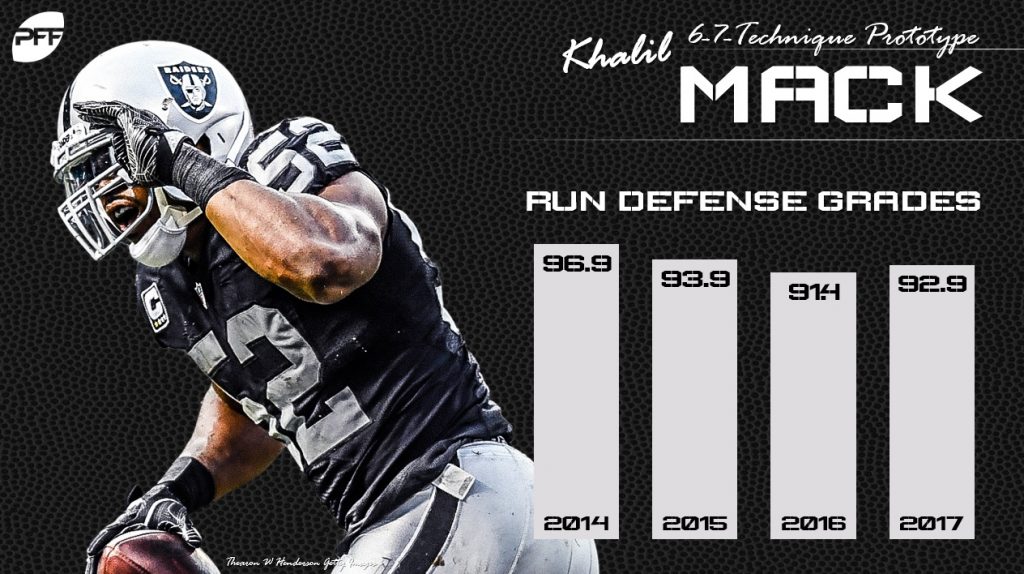
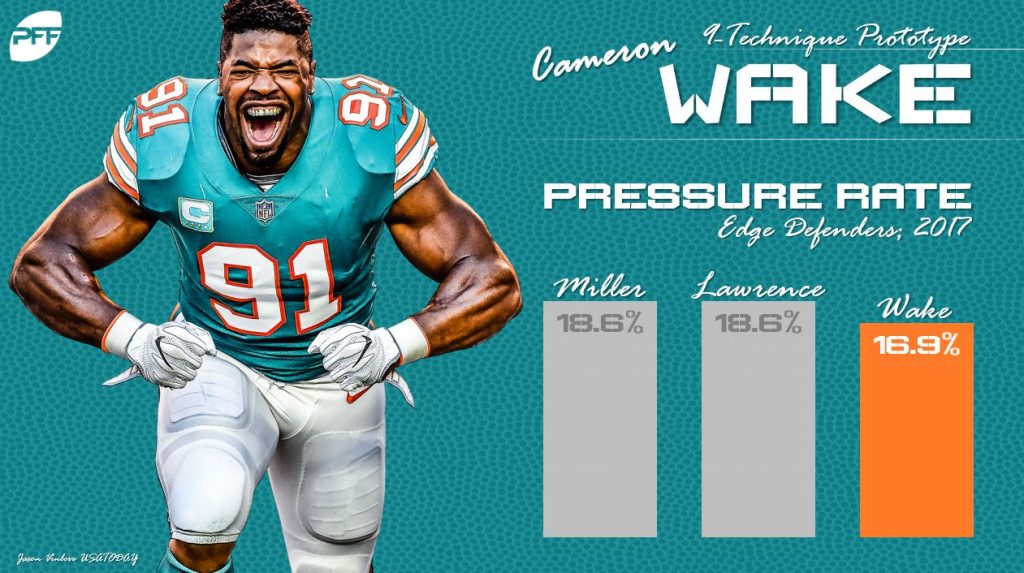
:format(webp)/cdn.vox-cdn.com/uploads/chorus_image/image/60060665/PassCatchingGroups02_Getty_Ringer.0.jpg)

